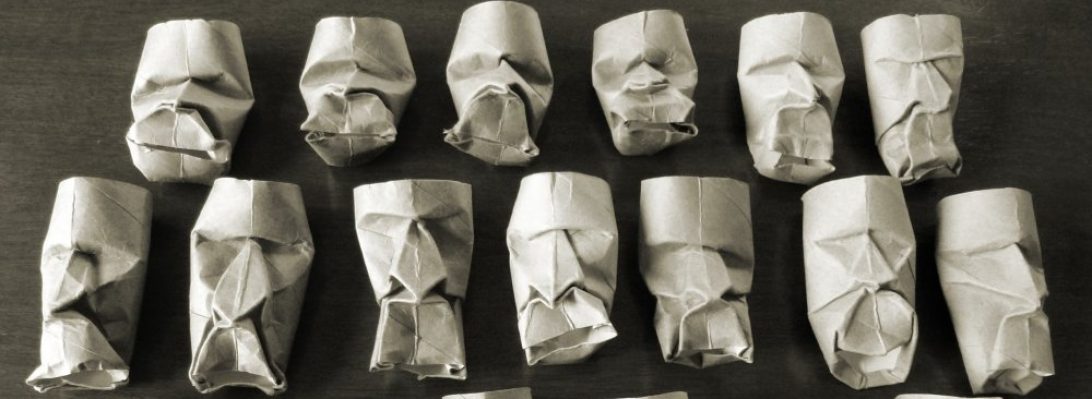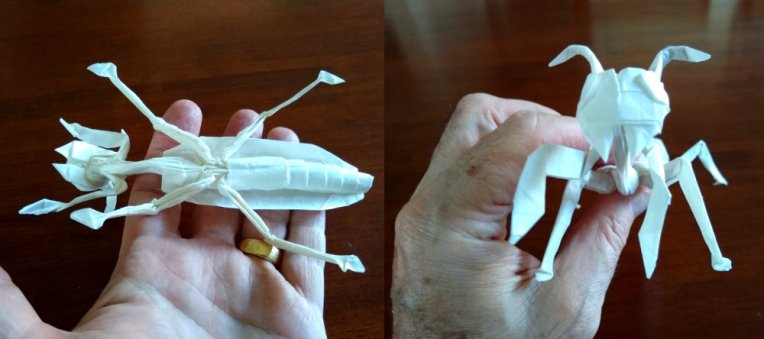Multi-unit Kusudama folding is something I enjoy – the emergent geometry and intricate interlocking of units to make a whole is very satisfying. None more than “Conglomerate” designed by Xander Perrott:

When I saw his fold on insta I knew I wanted to fold it – I had not seen anything quite like it, so I reached out to Xander and he shared instructions – how wonderful is the internet?
Let’s break this down – the kusudama is composed of 30 units, each folded from a rectangle in the proportions of 1: sqrt(3). Each unit has a triangle grid imposed on it, with triangular gussets to allow the “facets” of the faces to become 3D.

The geometry of the unit is very pleasing to fold, it all feels really natural, and the tiny collapse of the unit to make it 3D also feels right.
Interlocking the units …. now that seems to have taken me an age – each unit cups around one lobe and inside another lobe, forming a many-layered, staggered icosahedrons – each locked into place at multiple anchor points. It took me a while to master the locking process, then re-learn it as the orientation turned this way and that, but this kusudama needs no glue, and when a unit is fully locked in it is really rigid and strong.
Continue reading














